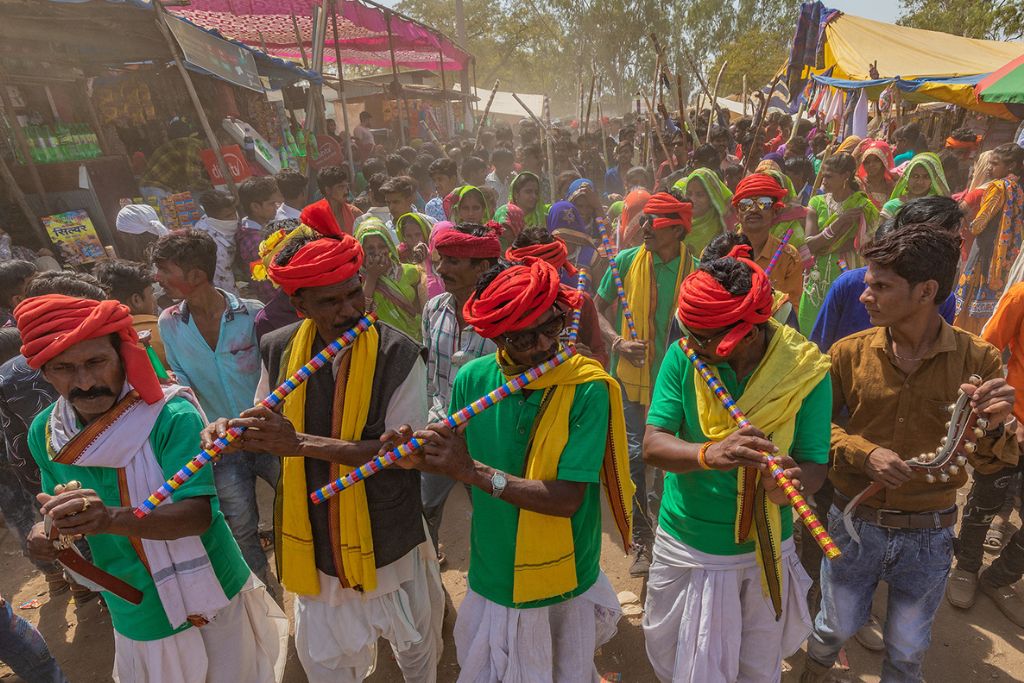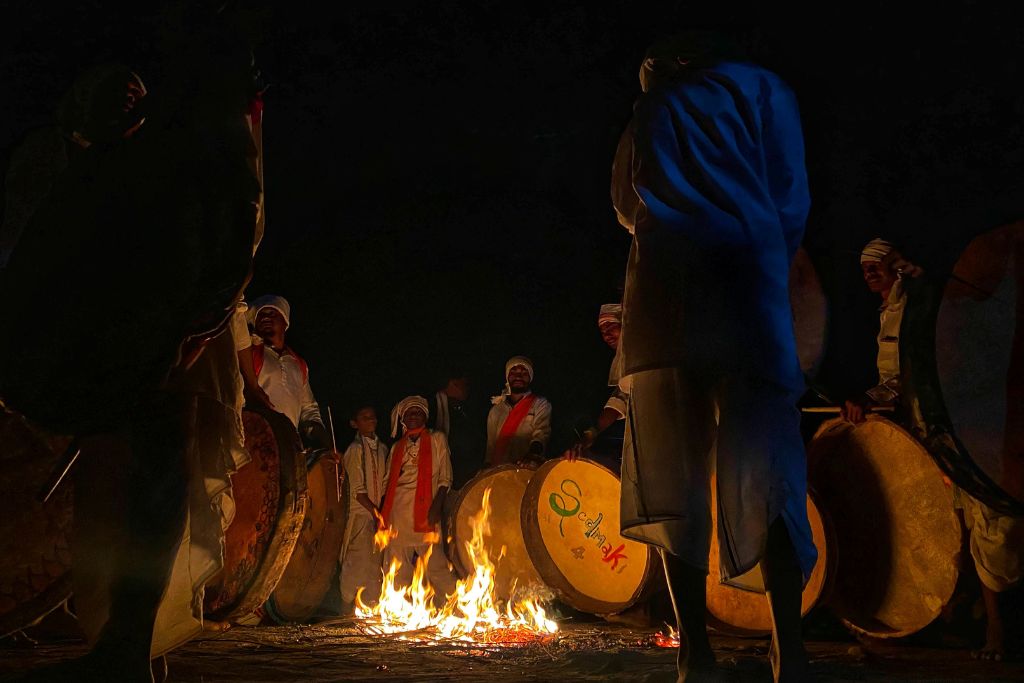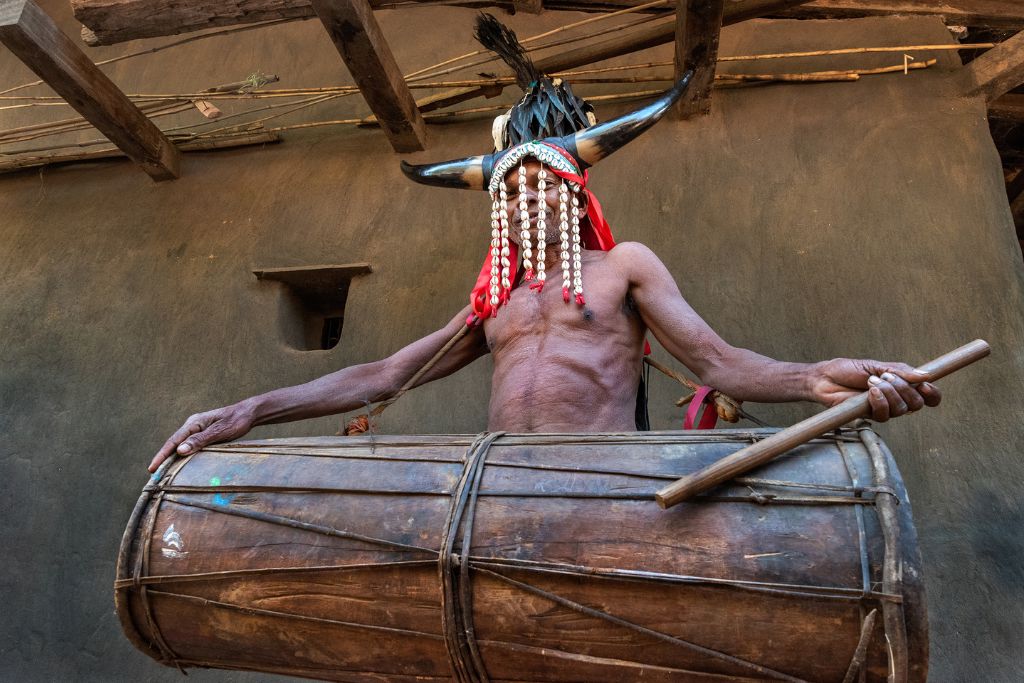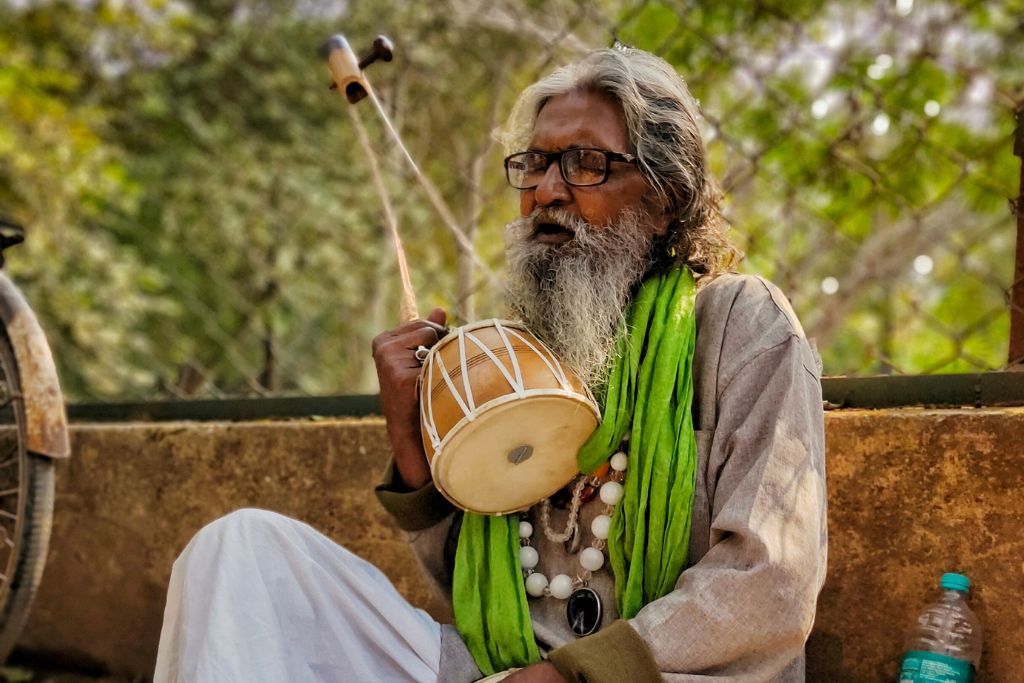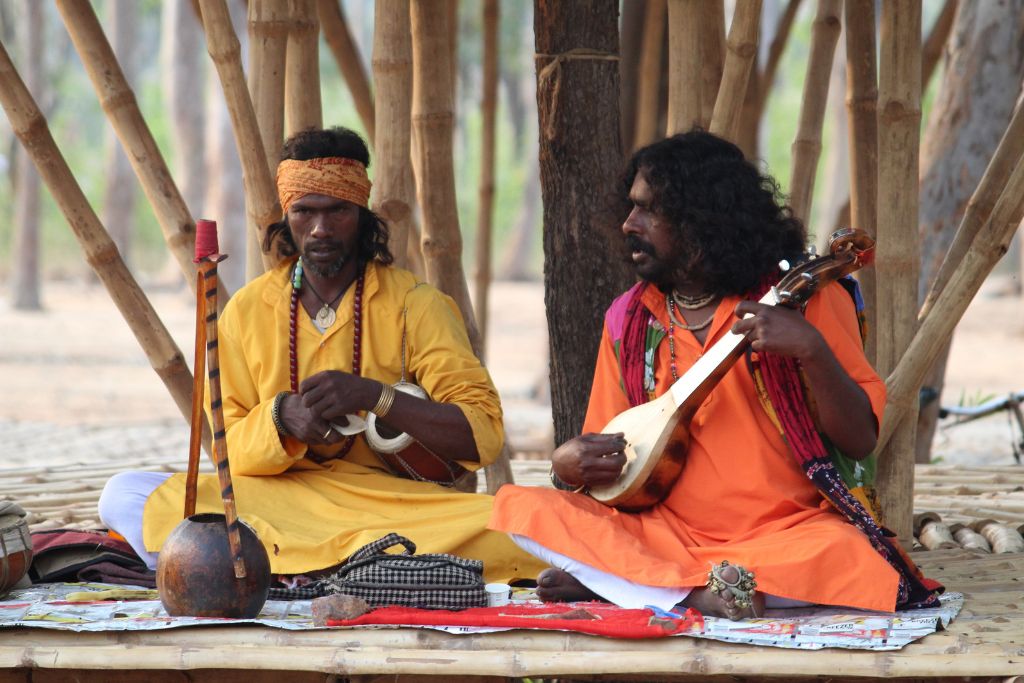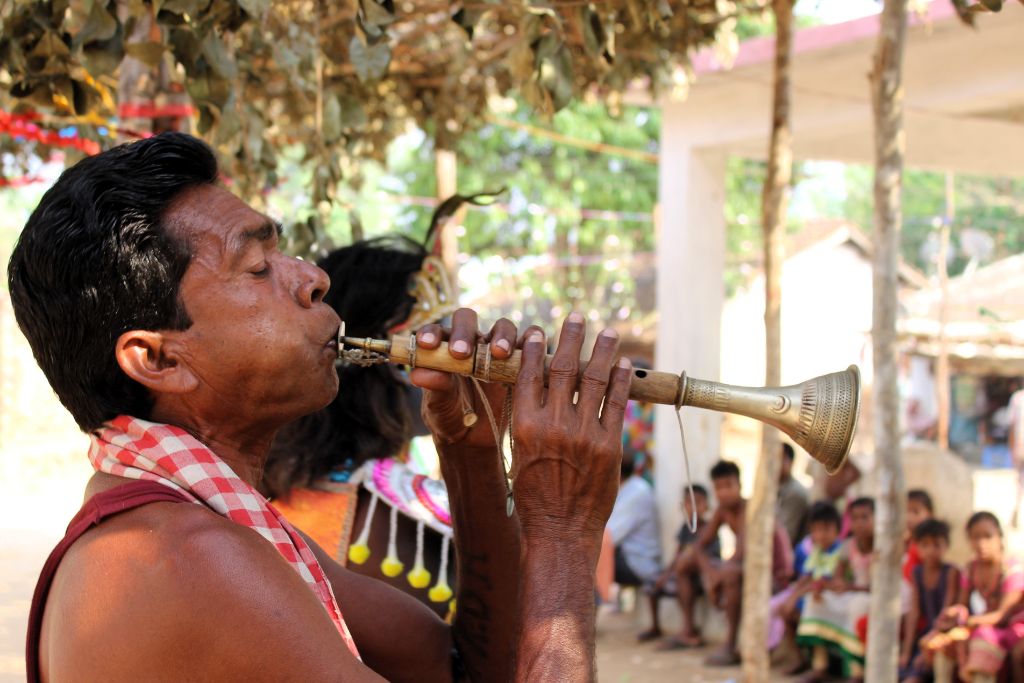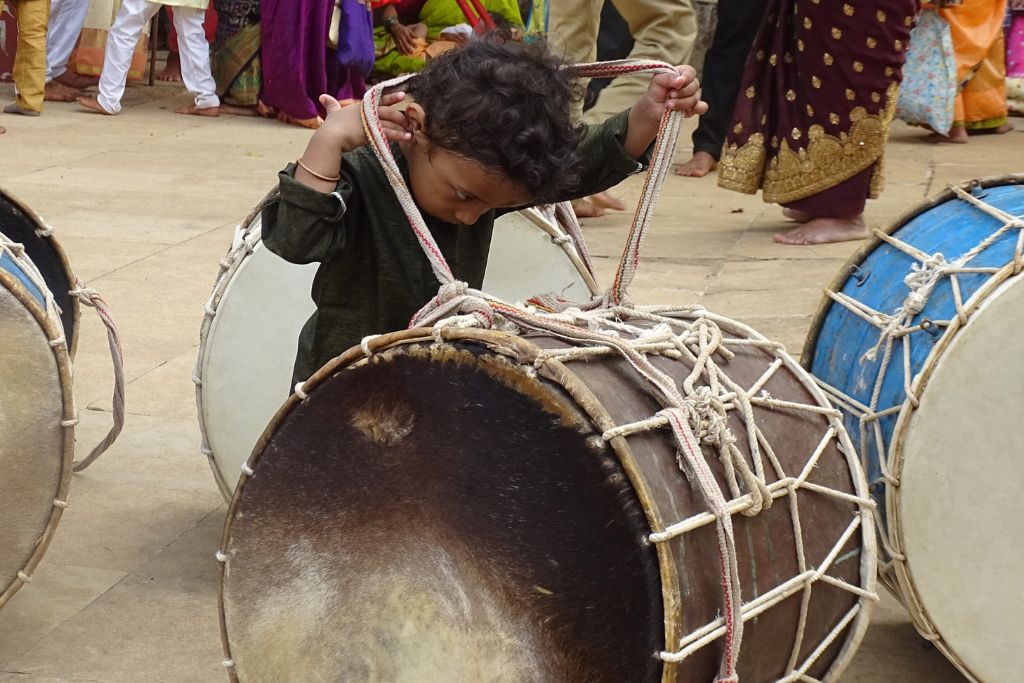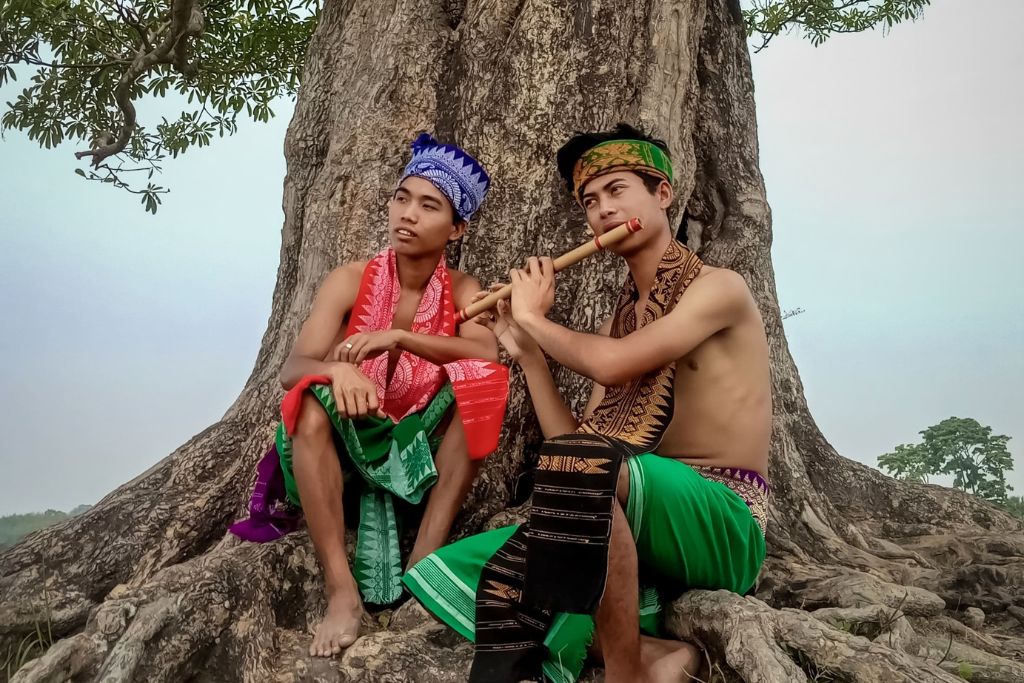
Have you heard these rural Indian musical instruments yet?
Rural India is a repository of folk music traditions. Here is a round-up in images of some of the musical instruments that are a part of this rich legacy. They certainly strike the right chord in the community, don’t they?
Musical instruments are melodious repositories of heritage. Every note emanating from an instrument is a testament to the vibrant art humankind is capable of producing. Over time, certain instruments come to be identified as integral elements of certain cultures. In India, particularly so in rural India, musical instruments are used in festivities, auspicious occasions and marriages. Here’s a look at some of the various musical instruments from rural India captured by contestants of Village Vibe Photo Contest 3.0.
Men belonging to the Bhil tribe play a traditional flute called pawali during the Bhagoriya festival in Alirajpur, Madhya Pradesh. Bhagoriya festival marks the onset of the spring season and falls a few days before Holi. It is accompanied by singing, dancing, and playing of various instruments like flutes and drums (Photo by Chetan Soni)
Also Read: Bhagoriya festival – Of blooming flowers and blossoming love
In Kumuram Bheem Asifabad, Telangana, traditional beats echo during the Gussadi festival as performers play their musical instruments in a symphony of culture and camaraderie. Gussadi is a tribal dance festival celebrated by the Gonds and Kolam tribes. A range of instruments like thudum, pepera, kalikom, dappu, ghumela and dhol are used during the Gussadi celebrations. The drums in this picture are called dappu in Telugu and dapk in Gondi (Photo by Satya Sainath)
Chhattisgarh’s Bison Horn Maria tribe, identified by their unique headgear, is one of the oldest tribes in central India. This picture captures a man in his traditional headdress made using bison horns, with a drum around his neck. Made of a hollowed-out tree trunk that is more than 3 feet in length, this drum is an integral element of the tribal culture here. (Photo by Puranjit Gangopadhyay)
Santiniketan was established by Rabindranath Tagore in 1901 to promote education through an alternate means of learning. This is a picture from Bolpur, Santiniketan, of a man playing an ektara, a one-string instrument typically associated with the Baul community of Bengal. (Photo by Nayan Chatterjee)
Also Read: Universal Brotherhood: Baul festival of mystic minstrels enchants Bengal village
Baul sangeet, or the music of the Bauls, is a type of folk music representing the Baul heritage of preaching mysticism through music. This image captures two Baul men with their traditional instruments – ektara (single-string instrument), dotara (multi-stringed instrument made of wood) and a khamak (single-headed wooden plucked drum). (Photo by Tania Das)
Also Read: She thought baul brings poverty, today she is a baulini of international acclaim
People from the Dombo community traditionally play music in the Koraput area of Odisha. They perform at different events like marriages, house inaugurations and village festivals, among others. This helps them earn an income. This picture was taken during the spring season when people dress up as gods and goddesses to perform in front of villagers. Muhuri is a musical instrument made of wood, with a double reed at one end and a wooden flared bell on the other. Its sound is thought to create and maintain a sense of auspiciousness and sanctity, explaining its wide use during marriages, processions and in temples. Muhuri is the leading ‘sur’ instrument in Sambalpuri music. (Photo by Dr Tejeswar Karkora)
In this picture from Konkan, a child is trying to take hold of a dhol, played on the joyous occasion of Holi. It seems to appear as a metaphorical depiction of the way children accept their culture and carry it on their shoulders as per their capacity and interest. (Photo by Snehal Neel)
